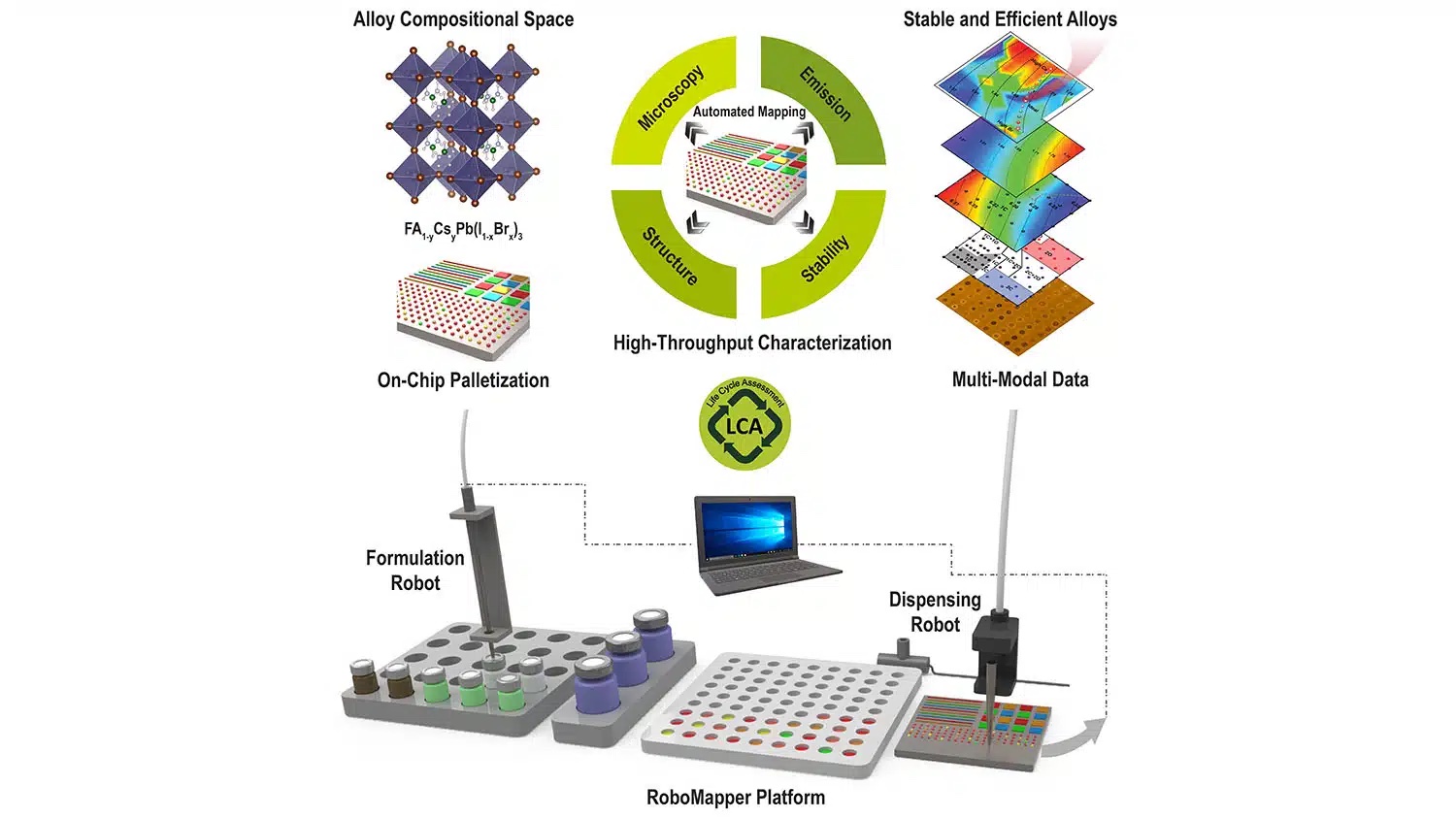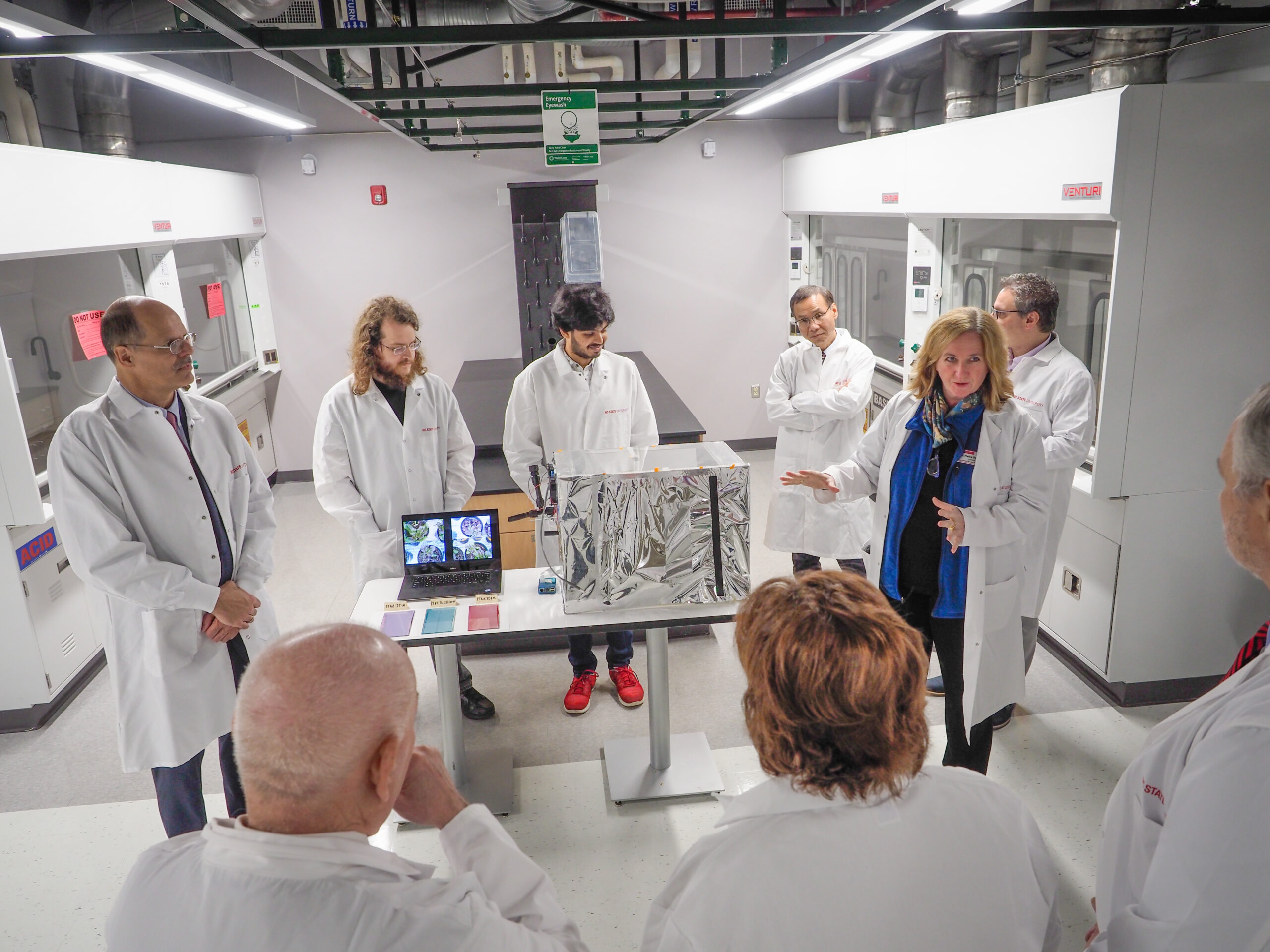Prof. Theo Dingemans, from UNC-CHI, Will Speak at ORaCEL Seminar on Tuesday May 22, 2018
Opportunities for Classic Step-growth Chemistries in Opto-electronic Applications
Prof. Theo Dingemans
Department of Applied Physical Sciences, University of North Carolina at Chapel Hill, 121 South Road, Chapel Hill, NC 27599-3055.
E-mail: tjd@unc.edu
Group Website
Date: Tuesday May 22, 2018
Venue: Toxicology Auditorium 2104
Time: 11:00 AM.
Abstract
All-aromatic conjugated small molecules and polymers are currently under evaluation as active materials for flexible, low-cost, ultra-thin electronic devices. Most conjugated materials used in organic electronics are synthesized using time-consuming Suzuki–, Wittig–, or Heck–type coupling reactions. These chemistries often make use of expensive transition metal catalysts, require stringent reaction conditions, and extensive product purification. In order to offer a more economic route towards organic conjugated materials we are exploring century old condensation chemistries, where amides (-CONH-) and azomethines (-CH=N-), are used as the (non) conjugated linker unit in the synthesis of organic opto-electronic building blocks. We have demonstrated that this allows us to design field-effect transistors (OFETs)[1], organic photovoltaics (OPVs)[2] and electrochromic devices[3] at acceptable material costs. We will report on our latest results and discuss the pros and cons of using simple one-pot step-growth chemistries towards the design and synthesis of novel conjugated molecules.
References
[1] (a) Yang, D.; Shrestha, R.P.; Dingemans, T.J.; Samulski, E.T.; Irene, E.A. Thin Solid Films, 2005, 500 (1-2), 9; (b) Dingemans, T.J.; StClair, T.L.; Samulski, E.T., Chem. Mater. 2004, 16, 966.
[2] (a) Petrus, M.K.; Music, A.; Closs, A.C.; Bijleveld, J.C.; Sirti, M.T.; Hu, Y.; Dingemans, T.J.; Bein, T.; Docampo B. J. Mater. Chem. A. 2017, 5, 25200; (b) Petrus, M.L.; Bein, T.; Dingemans, T.J.; Docampo P. J. Mater. Chem. A. 2015, 3, 12159. (c) Petrus, M.L.; Bouwer, R.K.M.; Lafont, U.; Athanasopoulus, S.; Greenham, N.C.; Dingemans, T.J. J. Mater. Chem. A. 2014, 2, 9474; (d) Petrus, M.L.; Bouwer, R.K.M.; Lafont, U.; Murthy, D.H.K.; Kist, R.J.P.; Böhm, M.L.; Olivier, Y.; Savenije, T.J.; Siebbeles, L.D.A.; Greenham, N.C.; Dingemans, T.J. Polym. Chem. 2013, 4, 4182; (e) Hindson, J.; Ulgut, B.; Friend, R.H.; Greenham, N.C.; Norder, B.; Kotlewski, A.; Dingemans, T.J., J. Mat. Chem., 2010, 20, 937.
[3] Mulholland, M.E.; Navarathne, D.; Petrus, M.L.; Dingemans, T.J.; Skene, W.G. J. Mater. Chem. C. 2014, 2, 9099
 Biography: Theo Dingemans is a professor of Applied Physical Sciences at the University of North Carolina at Chapel Hill (UNC). He is a Co-founder and CTO of Allotropica Technologies Inc. a technology that is an accelerator for high-performance polymers in Chapel Hill, North Carolina. He received his Ph.D. in Chemistry from UNC . His research interests focus on the design and synthesis of high molecular weight all-aromatic polymers, low molar mass liquid crystals and the conjunction of these two topics in order to engineer new classes of high-performance polymers. For example, his group designs liquid crystal network polymers, aramids, epoxies, polyimides, and polyaryletherketones that can be used to prepare high-strength fibers, films and (non)continuous fiber reinforced (nano)composites. He is a recipient of several awards.
Biography: Theo Dingemans is a professor of Applied Physical Sciences at the University of North Carolina at Chapel Hill (UNC). He is a Co-founder and CTO of Allotropica Technologies Inc. a technology that is an accelerator for high-performance polymers in Chapel Hill, North Carolina. He received his Ph.D. in Chemistry from UNC . His research interests focus on the design and synthesis of high molecular weight all-aromatic polymers, low molar mass liquid crystals and the conjunction of these two topics in order to engineer new classes of high-performance polymers. For example, his group designs liquid crystal network polymers, aramids, epoxies, polyimides, and polyaryletherketones that can be used to prepare high-strength fibers, films and (non)continuous fiber reinforced (nano)composites. He is a recipient of several awards.


